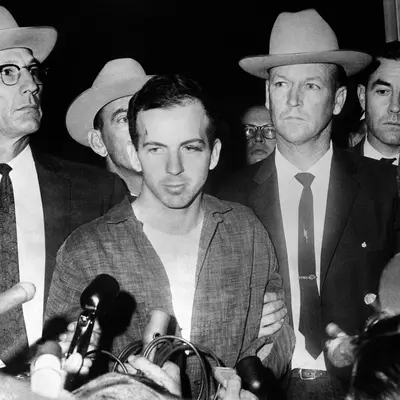Lee Harvey Oswald at a Glance
Lee Harvey Oswald: A Life of Controversy and the Legacy of a President’s Assassin
Lee Harvey Oswald remains one of the most infamous figures in American history. Best known as the assassin of President John F. Kennedy, Oswald’s life was marked by complexity, controversy, and a series of events that continue to be debated to this day. This article delves into Oswald’s life, exploring his early years, military service, defection to the Soviet Union, the assassination itself, and the enduring legacy of his actions.
Early Life and Troubled Youth
Lee Harvey Oswald was born in New Orleans, Louisiana, on October 18, 1939. His father died before his birth, leaving a lasting impact on his upbringing. His mother, Marguerite Frances Claverie, moved the family frequently, leading to instability in Oswald’s early education. He attended twelve different schools, demonstrating a pattern of restlessness and difficulty in forming attachments. Oswald’s childhood was marked by a sense of isolation and emotional detachment. He was described as withdrawn and temperamental, and a psychiatrist attributed his issues to a lack of maternal affection. This difficult early life may have contributed to the development of his later behaviors.
Oswald’s academic career was also troubled. He never completed high school, dropping out at the age of 17 to enlist in the Marines. This early departure from formal education highlights a pattern of nonconformity and a search for identity.
Military Career: From the Marines to Defection
In October 1956, shortly after his 17th birthday, Oswald enlisted in the United States Marine Corps. He underwent training and was assigned to Marine Air Control Squadron 1 at the Naval Air Facility Atsugi near Tokyo, Japan. His time in the Marines was characterized by disciplinary issues. He was involved in altercations, including a fight with a sergeant, which led to his demotion and a period of confinement. While in the Marines, Oswald developed an interest in the Russian language, a skill that would later play a significant role in his life’s trajectory.
Life in the Soviet Union: A Controversial Stay
In 1959, Oswald received a hardship discharge from the Marines, claiming he needed to care for his mother. Shortly thereafter, he embarked on a journey to the Soviet Union. Upon arriving, he declared his communist leanings and expressed his desire to become a Soviet citizen. After initial resistance, he employed self-inflicted injury to prolong his stay, eventually denouncing his U.S. citizenship at the embassy in Moscow. He was allowed to remain in the Soviet Union but was not permitted to attend Moscow State University as he had hoped. Instead, he was sent to Minsk, Belarus, where he worked at the Gorizont Electronics factory.
While in Minsk, Oswald lived a relatively comfortable life by Soviet standards, but he grew increasingly disillusioned. In 1962, he applied to repatriate to the United States and returned in June 1961. After returning to the U.S., Oswald struggled to maintain stable employment, moving from job to job. His political views and personal relationships became increasingly erratic, leading to suspicion and concern from those around him.
Before the Kennedy assassination, Oswald was also linked to the attempted assassination of Edwin Walker, a retired U.S. Major General and outspoken anti-Communist. Though not charged at the time, evidence later suggested his involvement. This incident revealed Oswald’s radical political leanings.

(STRINGER/AFP via Getty Images)
The Assassination of John F. Kennedy
On November 22, 1963, Lee Harvey Oswald fatally shot President John F. Kennedy in Dallas, Texas. The assassination occurred from the sixth floor of the Texas School Book Depository as Kennedy’s motorcade passed by. Oswald also shot and killed Dallas police officer J.D. Tippit shortly after the assassination. He was arrested and charged with both murders, although he denied any involvement. Two days after the assassination, Oswald was shot and killed by Jack Ruby, a local nightclub owner, on live television at the Dallas Police Headquarters. The Warren Commission, formed to investigate the assassination, concluded that Oswald acted alone.
Aftermath and Lasting Impact
The death of Lee Harvey Oswald led to numerous challenges, including finding a burial place. His remains were eventually interred at Rose Hill Cemetery in Fort Worth, Texas. In the late 1970s, claims emerged that a look-alike had been buried in place of Oswald, leading to the exhumation of his body. Dental records confirmed the identity of the remains. The assassination of JFK remains a pivotal event in American history, and conspiracy theories continue to circulate, reflecting the public’s skepticism about the official version of events.
Oswald’s actions had a profound and lasting impact on the political landscape, contributing to the formation of several conspiracy theories. Even today, many Americans doubt the official findings of the Warren Commission.
Personal Life and Relationships
While in Belarus, Oswald had a relationship with Ella German. However, the relationship ended when German discovered Oswald was seeing other women. He later met Marina Prusakova, a 19-year-old student, and they married after a short courtship, soon after welcoming a child. The family moved to the U.S. in mid-1961. These relationships offer further insight into the complex nature of Oswald’s personality.
/**/

